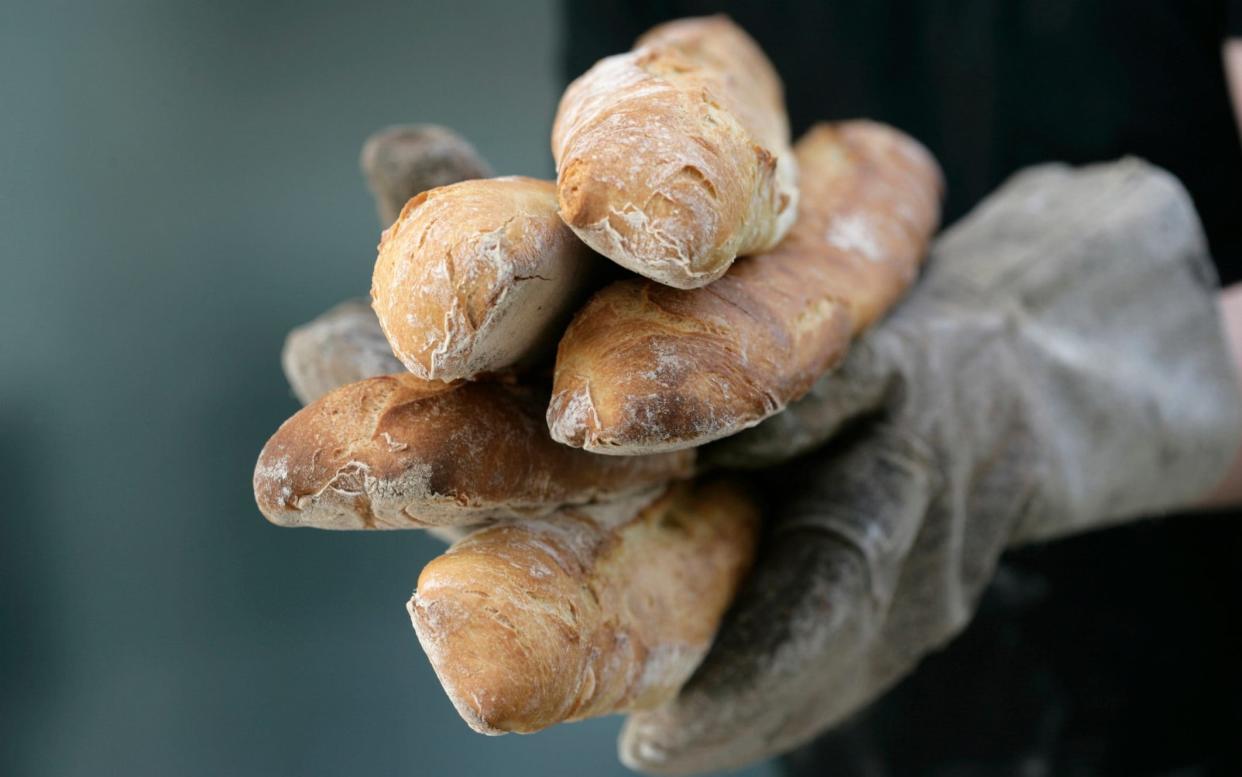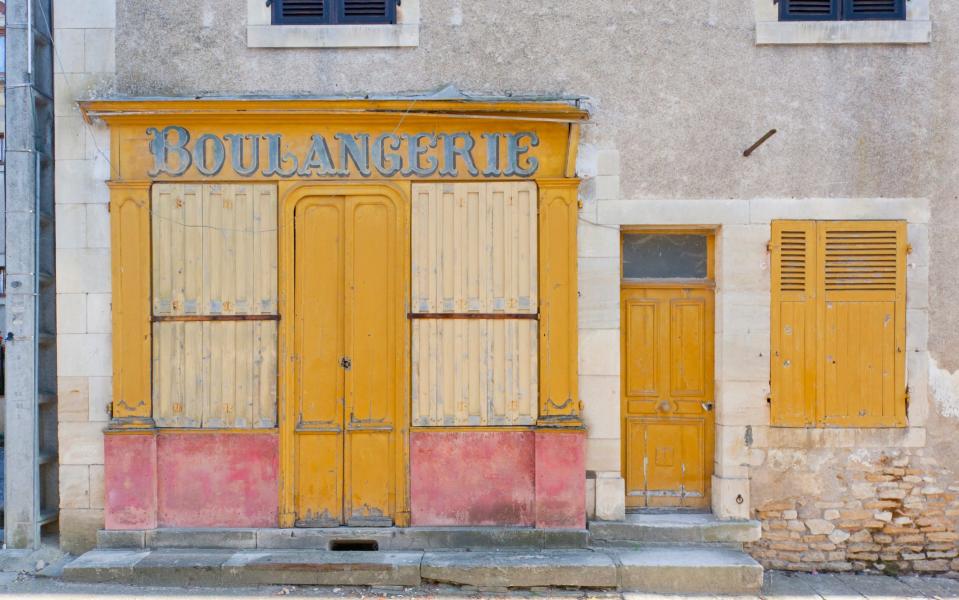Why the French are obsessed with baguettes

Lord, how the French love to go on about bread. I live among them and there are times when I swear that, if I hear one more word on the subject, I shall be moved to senseless violence. Bread is even more of a French obsession than wine and cheese. Pressed, a French person might admit that other nations make semi-comestible wines and cheeses. But bread? No-one, they will say, comes close.
Certainly, the Frenchman puts his bread where his mouth is. Depending on whose figures you believe, the nation eats between 30 and 32 million loaves a day, most (but not all) bought from some 32,000 retail bakeries. That works out at roughly half a baguette per French person per day. The figure is down from a full baguette per day in 1970 – and three in 1900. But it remains quite a lot. And I’m pretty sure no other nation talks about bread so much or considers it so a vital part of the national self-image. If you wish to construct a Frenchman, you only need add a bike, beret and onions.
Right now – and here’s the point – bread mania has reached a crescendo. The long-running campaign to get the baguette onto Unesco’s “Intangible Cultural Heritage of Humanity” list has finally borne fruit. The intangible cultural heritage thing might not count for beans in Britain but the French – and, indeed, other continentals – do love an official label validating their vanity. They have dozens, but none outranks Unesco approval. And what better addition to the list – what else could more persuasively say: “France”?
Then again, the baguette is not quite as traditional as sometimes supposed. The exact origins of the long loaf are, as we shall see, disputed. But no-one’s saying it’s more than 200 years old, absolute max. In the history of bread, that’s yesterday. We’ve had bread since the Natufians (of whom I, too, have only recently heard; they were in present-day Palestine) were making it around 12000BC. Millennia later, Sumerians were good at flat breads.
Egyptians, Greeks and Romans added yeast, so that bread rose. By the middle ages, bread in France was the staple both as food – and as tableware. Diners used a slice of stale bread as an absorbent plate. At the end of the meal, they’d give what they called the “tranchoir” to the poor or the dogs. In English, tranchoir became “trencher”, whence trencherman. Similarly, the person with whom one broke bread was described as “cum panem” (“with bread”). Time and usage mangled the phrase into “compagnon” (“companion” in English) and finally “copain”, the present French word for a chum. I often share this knowledge with French friends. They are invariably startled into changing the subject.

Bread was, naturally, at the centre of family, social and political life. Shortages and soaring prices consequent upon poor harvests in 1774-75 were key elements leading to the tumult of the French revolution four years later. Indeed, one of the first jobs of the First Republic in 1792 was to control the price of a loaf. Controls stayed in place until 1986.
From the 19th century, we bump into abundant suggestions concerning the specific origin of the baguette. Formerly, French breads had all been round and, especially for the poor, made of flour mixing coarse wheat with rye. One story has it that the lighter, long baguette was devised for easier carrying by Napoleonic troops. Another claims that it was devised for workers building the Paris Metro, as a bread that could be cut by hand. The usual circular breads required knives, thus favouring underground stabbings, notably in brawls between Breton and Auvergnat workers. Give them baguettes and they didn’t need knives. One still meets people who claim that a baguette should never be cut with a knife. Presumably, they have violent antecedents.
A third theory underlines the demand by new, prosperous urban classes for fresh bread daily – previously, longer-lasting bread had been baked but once a week or, in country areas, less frequently still. The urban demand coincided with the development of more highly refined flour, with the arrival of the steam oven from Austria and the use of compact yeasts. Shaping all that into a long, rather than round, loaf meant that bread could be kneaded and baked more quickly, saving cash. The resultant whiter bread was, naturally, accessible only to the well-heeled. Peasants still ate the darker stuff.

Until around 1945, that is. As breadman Chistophe Cressent of Rouen told me: “After the war, French people had had enough of black bread. They all wanted white and airy baguettes from highly refined flour. For them, that spelled an end to hardship.” According to Cressent, it also spelled the beginning of the end of taste. Industrial bakers marched into the market. OK, they didn’t take it over as in the UK – or the US, where slicing and wrapping machinery had arrived in the late 1920s. (Americans thought this fantastic, the touchstone for innovations in other domains which might be “the best thing since sliced bread”.)
Bread industrialisation in France was less radical. It involved big bakeries churning out fast-fermented baguettes, boosted by additives, for onward selling in supermarkets and retail bakeries. Or the provision of ready-prepared dough which only needed sticking in the retail bakery oven.
The watchdogs of French gastronomy – they are legion – were alerted. As industrial production edged towards 25% of the market (it’s far higher in the UK), so the French, than whom no people are keener on a regulation, came up with regulations. These days, only bakers who produce their own bread from A-Z may call themselves “bakers’ shops”, or “boulangeries”. “Boulangerie” on a shop sign guarantees that proper baking is done within. That doesn’t guarantee that the bread is good, but it will be home-made. If the sign says anything else, it doesn’t mean the bread is bad, just not made on the premises.
There are further regulations. A baguette should be between 1.5 and 2.4 inches wide, 1.2 and two inches high, around 26 inches long and nine ounces in weight. The crust should be crisp, the inside supple and honeycombed. For a baguette to be termed “tradition”, ingredients must be confined to wheat flour, water, yeast and a bit of salt. Nothing else. Though a few centimes extra, this is the one to go for.
Still and all, the battle of the baguette concerns not only quality but also quantity. As we’ve seen, consumption has plummeted over the last century. This is partly because French people are eating cereals, not bread and jam, at breakfast and biscuits at teatime while, at dinner, soft-bun burgers make baguettes superfluous; partly because many assume that bread makes them fat and unhealthy. Modern worries related to gluten haven’t helped.
Unsurprisingly, French bakers are fighting back. They’re a combative lot. (Marx called them “white-faced miners”.) For a start, they’ve diversified. Even in remote villages, you’ll find baguettes with added fruit and nuts, olives and spices. They have resuscitated country and whole wheat breads previously the preserve of the impoverished peasant. There are snacks, also. There’s barely a baker’s where you can’t buy a sandwich. They will point out, too, that the baguette remains inexpensive. Over the last 20 years, the price may have risen 40 per cent to around 75 pence but the basic minimum wage has risen further, by 60 per cent. The baguette has, thus, grown relatively cheaper.

Bakers are also sustained by affection. They are not merely France’s favourite shops but, as pubs in Britain, a key part of national identity. If the baker’s shop shuts, the village is dying. French people may be eating less of it but all feel concerned by the state of the bread trade. The TV news is forever taking us in to bread shops to report on bakers’ headaches. The person who wins the annual “best baguette in Paris” comp, and therefore the right to provide President Macron’s daily bread, becomes a star.
The talk and concern are unceasing. Whence the occasional despair of those, like me, brought up in a country where bread was taken for granted: serious, certainly, but also a side-issue. After more than 30 years, I’m learning, mind. Certainly, I out-eat the average French person, bread-wise. Lunch or dinner without the help of half a baguette would be strange. And I, too, can discourse fluently on, say, the wonderfulness of the “tradigrain” loaf from our village bakery.
But I think I know when to stop. The average Frenchman, by and large, doesn’t, unless hit with a shovel. This is only going to get worse thanks to Unesco’s recognition.

 Yahoo Movies
Yahoo Movies 
